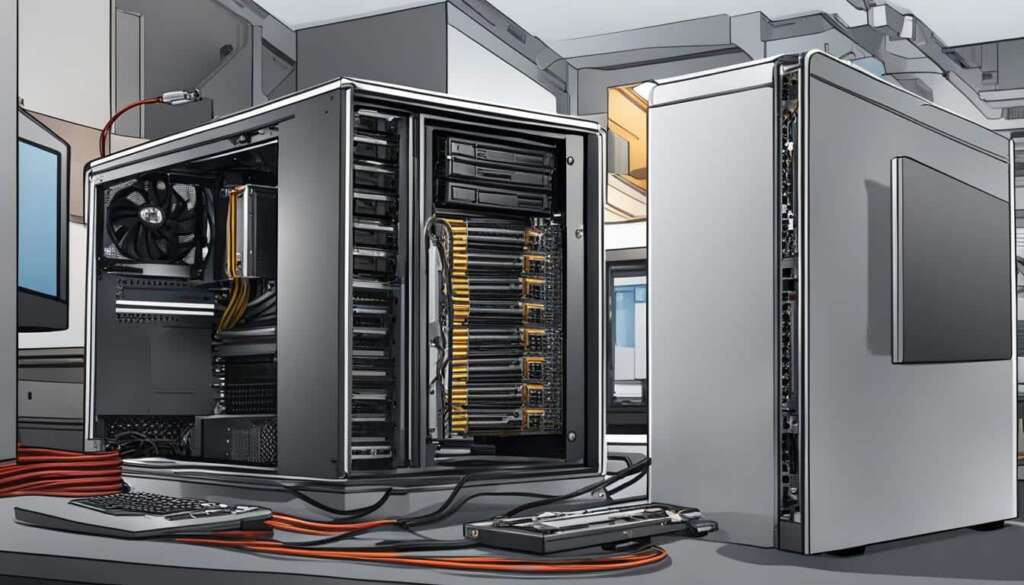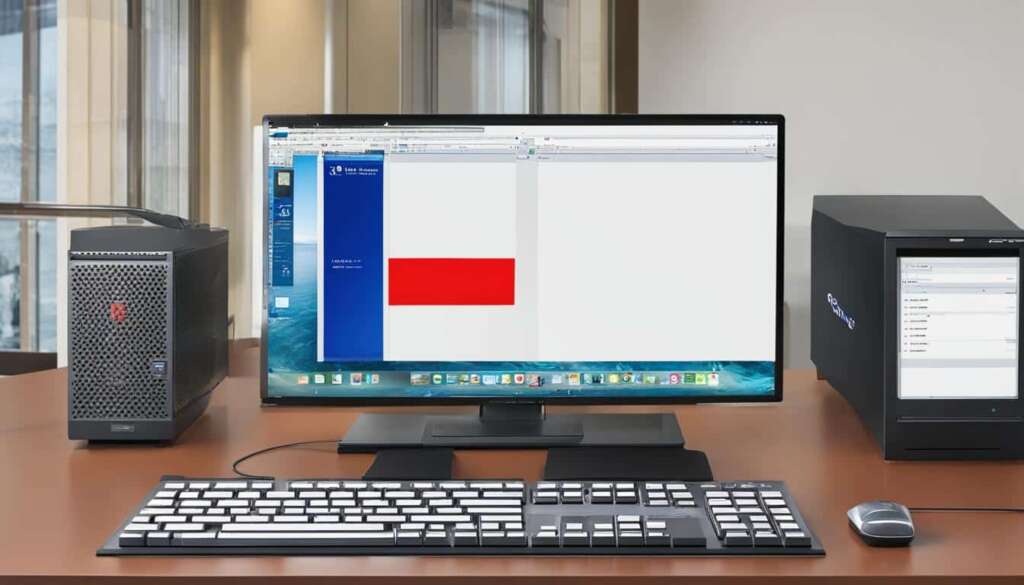Table of Contents
If you’re running out of storage space on your PC, don’t worry! There are simple steps you can take to create more room and keep your system running smoothly. Whether you need to add storage, delete unnecessary files, or upgrade your hardware, this guide will walk you through the process. Let’s start by exploring how to add storage to your PC.
If you’re looking to expand your PC storage, there are several options available. One method is to delete programs you no longer need. Using the uninstall feature in your operating system, you can easily remove unnecessary software. On Windows 10 and 8, right-click the Start button, go to Control Panel, and select “Uninstall a program.” On Windows 7, Vista, or XP, click the Start button, go to Control Panel, and choose “Add/Remove Programs.”
Another effective way to free up storage space is by backing up rarely used data on an external hard drive. This ensures your files are safe while removing them from your system. Consider transferring images, videos, or large files that you don’t need immediate access to an external storage device. This step will free up significant space on your PC.
Additionally, you can use the Disk Cleanup utility to remove temporary files, clear the cache, empty the Recycle Bin, and delete other unnecessary items. This tool is built-in to Windows and can be accessed through the Control Panel. Simply select the files you want to delete and let the utility do its work.
In addition to these steps, keeping your operating system up-to-date with regular Windows Updates is important for maintaining storage space. These updates include bug fixes and performance improvements that can help optimize your PC’s storage usage.
So, when you’re facing a shortage of storage space on your PC, remember that there are simple and effective solutions available. By following these step-by-step guidelines, you can expand your PC storage, add more room for your files, and enhance your overall computing experience.
Stay tuned for the next section, where we’ll explore the benefits of upgrading to a solid-state drive (SSD) for improved performance.
Upgrading to an SSD for Improved Performance
If you’re looking for a major performance boost, upgrading to a solid-state drive (SSD) is a great option. SSDs use NAND-based flash memory to store data, offering faster access times, quicker boot-up and application load times, and improved overall responsiveness compared to traditional hard disk drives (HDDs).
“Upgrading to an SSD can significantly enhance the performance of your computer, making tasks such as opening files, running applications, and booting up your system much faster and smoother.”
SSDs are also more shock resistant, less affected by magnetic fields, and operate quietly and efficiently. They are compatible with both Macs and PCs, and can be easily installed as a replacement for your existing HDD.
Some older PCs may also support M.2 SSDs, which are even faster and smaller in size. While SSDs may be slightly more expensive than HDDs, the performance benefits often outweigh the cost. It’s important to check the compatibility of your computer and choose the right SSD for your needs.
The Benefits of Upgrading to an SSD:
- Faster access times and improved overall system responsiveness
- Quicker boot-up and application load times
- Greater shock resistance and durability
- No noise or moving parts, resulting in a quieter operation
- Less affected by magnetic fields
Here’s a comparison table that highlights the key differences between SSDs and HDDs:
| Feature | SSD | HDD |
|---|---|---|
| Speed | Significantly faster | Slower |
| Noise | Silent | Audible mechanical noise |
| Shock Resistance | High | Low |
| Power Consumption | Lower power usage | Higher power usage |
| Size | Smaller and lighter | larger and heavier |
How to Upgrade Your PC with an SSD
Upgrading your PC with an SSD can significantly enhance your computer’s performance and speed. Whether you’re a tech-savvy DIY enthusiast or prefer professional assistance, this guide will walk you through the process of upgrading your PC with an SSD.
If you’re confident in handling computer hardware, start by selecting a compatible SSD from reputable manufacturers such as Samsung, SanDisk, Crucial, or Toshiba. Online tutorials can provide step-by-step instructions for installing the SSD yourself. Note that for desktop PCs using a 3.5″ drive, you may need a mounting adapter to fit the new SSD properly.
Once you have the SSD, you’ll need to transfer your data from the old drive to the new one. This can be done using cloning software, which creates an exact replica of your current hard drive’s data. To facilitate the data migration process, you’ll also require an external drive case or enclosure to connect the SSD to your computer.
It’s crucial to back up your data before proceeding with the SSD upgrade to ensure its safety. If you’re not confident in completing the DIY process, many computer repair specialists offer SSD upgrade services and can handle the installation and data migration for you.
FAQ
How can I create more storage space on my PC?
You can delete programs you no longer need using the uninstall feature in your operating system. Additionally, you can back up rarely used data on an external hard drive and use the Disk Cleanup utility to remove temporary files and unnecessary items.
What are the benefits of upgrading to an SSD?
Upgrading to an SSD can provide faster access times, quicker boot-up and application load times, improved overall responsiveness, and increased shock resistance. SSDs are also less affected by magnetic fields, operate quietly and efficiently, and can be easily installed as a replacement for your existing HDD.
How do I upgrade my PC with an SSD?
If you’re comfortable with computer hardware, you can purchase a compatible SSD, follow online tutorials, and use cloning software to transfer your data. If you prefer professional assistance, many computer repair specialists offer SSD upgrade services.













